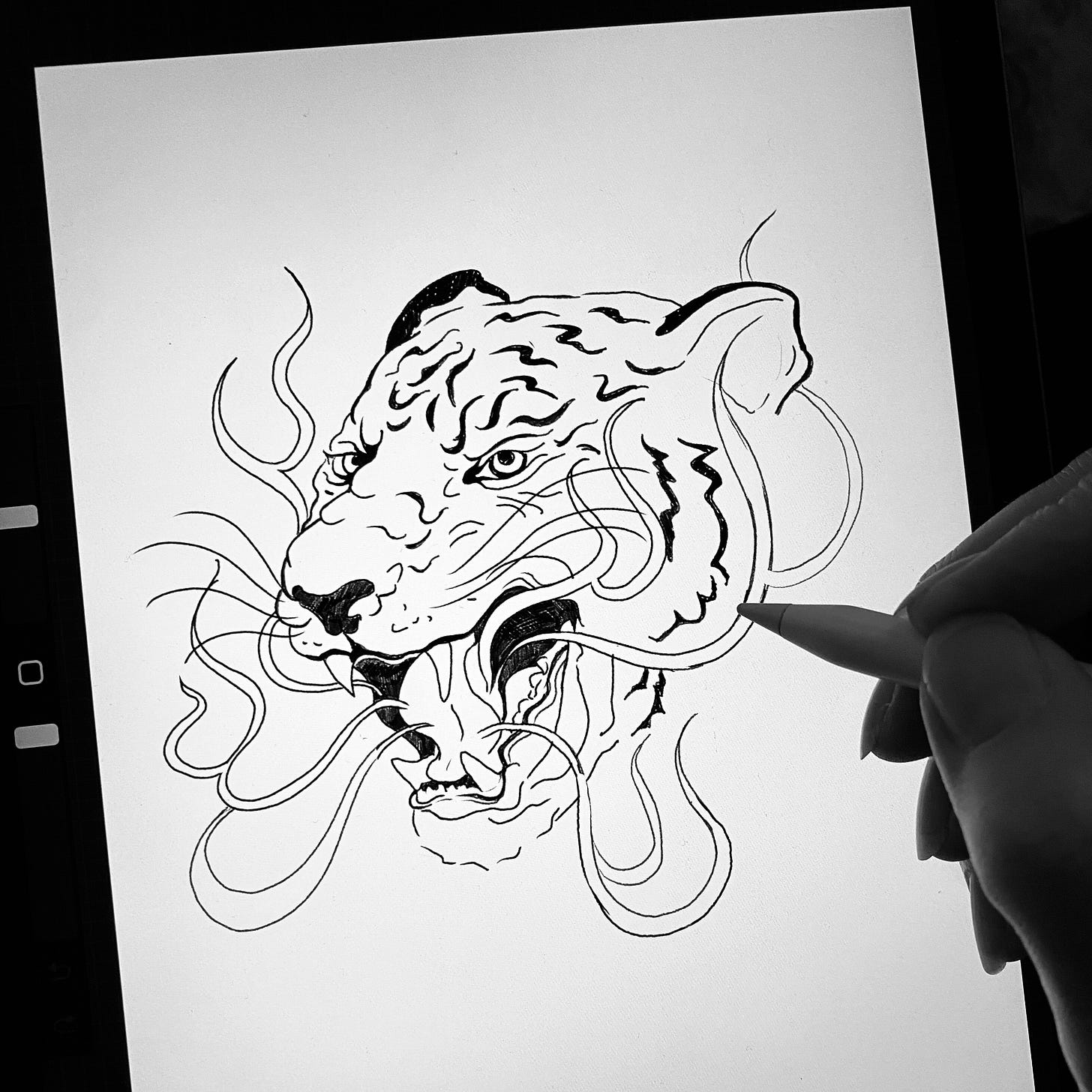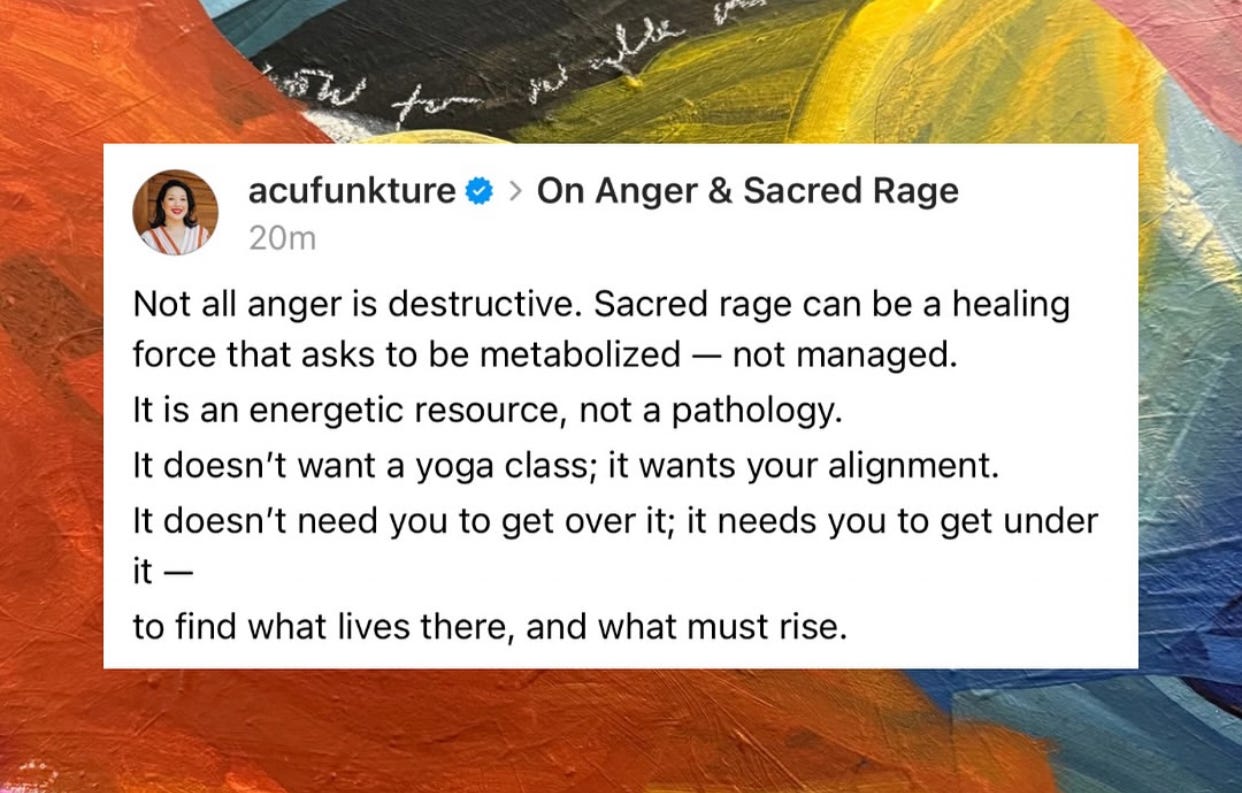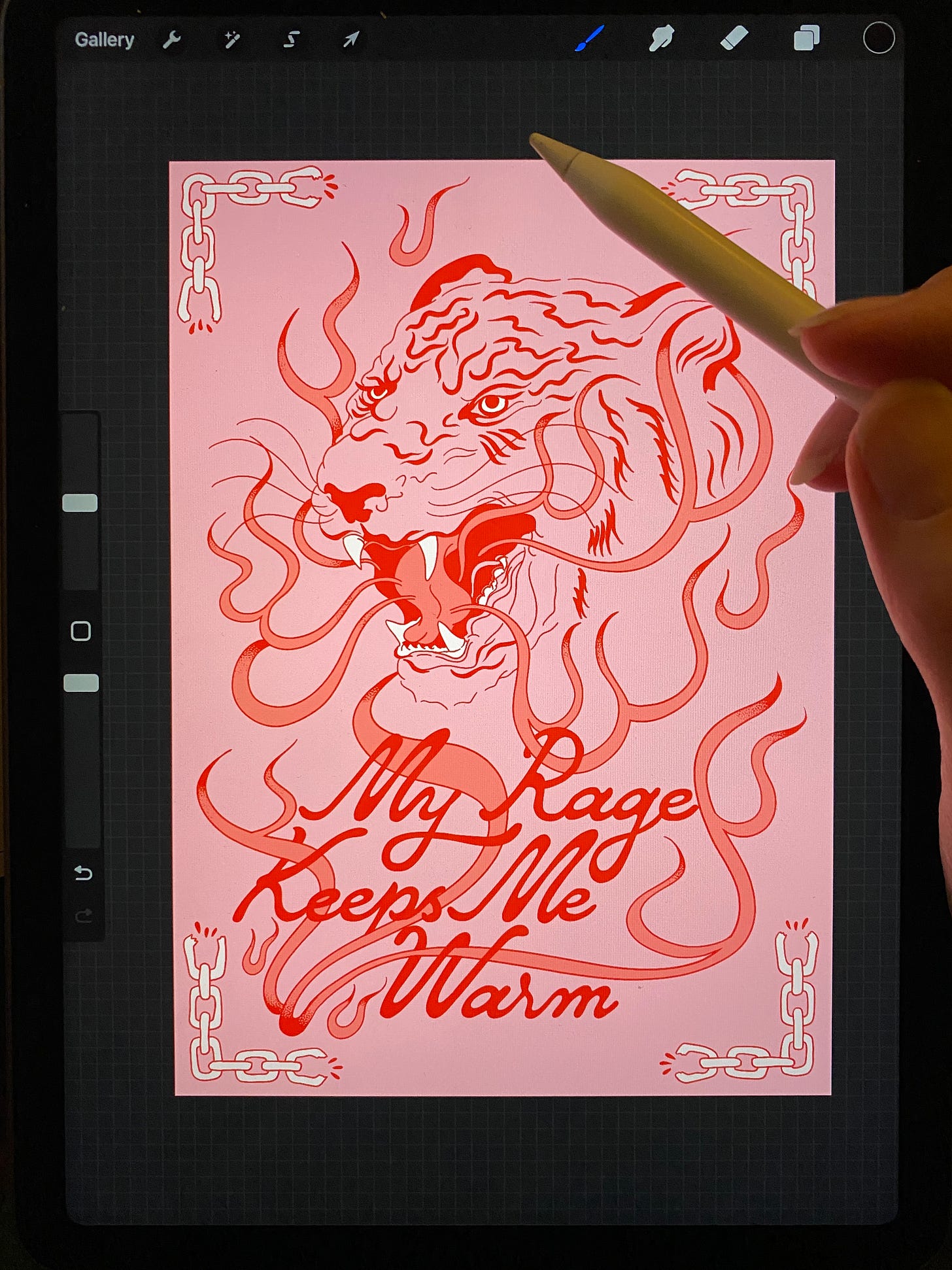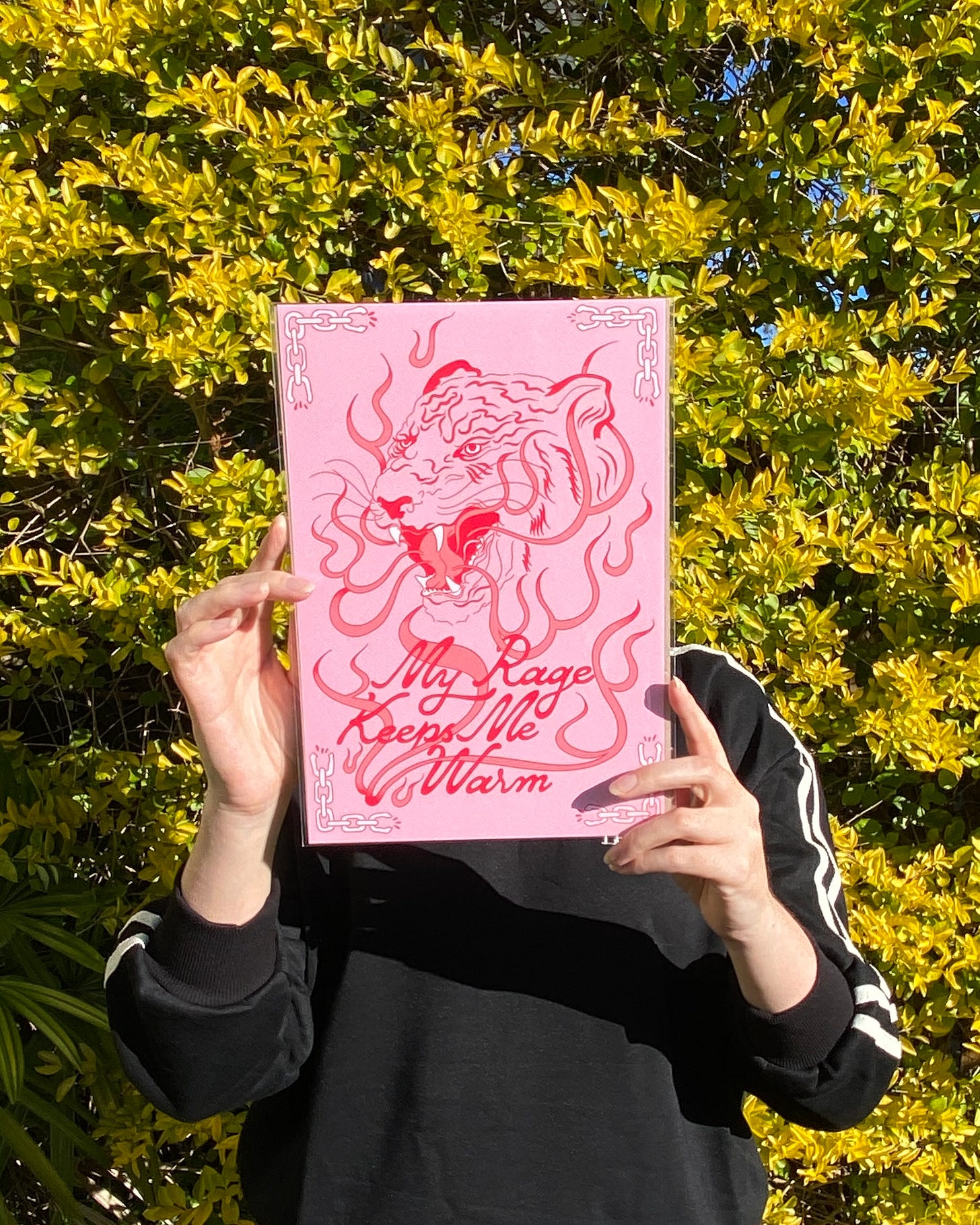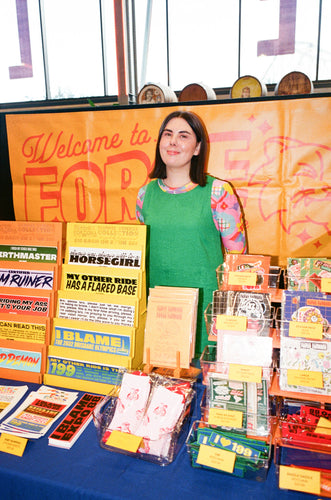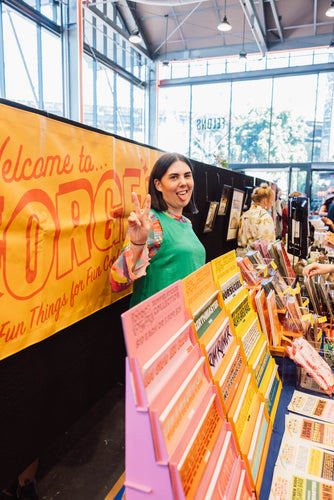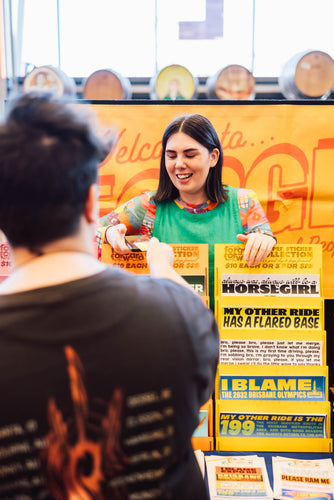
My Rage Keeps Me Warm; the story behind my new print
Share
It was chilly and uncharacteristically I wasn’t wearing a jumper.
My mother looked at me and asked, “Aren’t you cold?”
Without skipping a beat, I said, “My rage keeps me warm.”
Continuing to stab at my dinner.
As with most hot takes, they come from somewhere liminal between my brain and my mouth, off the back of a weekend that was full of complications; icky conversations, family dynamics, emotional misfires. It left me feeling a lot of things, but mostly: rage. That’s not new for me. I’m someone who feels anger keenly and willingly, but not to destroy. I usually find it useful to transmute it, like metal melting down before becoming something else.
This isn’t a new concept, anger like all emotions is energy - emotions are simply energy in motion. When energy gets stuck, it creates all kinds of issues, the kinds of issues you don’t want. So in order to move through, I usually channel my rage into something creative.
Of all the emotions I experience, rage is the most potent and the most useful. Sadness results in music, joy and happiness results in jokes and time wasting - quite frankly - and I’m yet to find a suitable outlet for grief, disappointment and flatness.
On Rage
I don’t think anger itself is inherently bad. What people usually fear is what comes after — an outburst, a rupture, a devastating result. Anger handled poorly explodes outwards and effects others - like a landmine going off. Anger handled well can be manipulated and channeled, if you can manage it.
The gendering of rage is a problem for many reasons also. One, it shouldn’t be at all because it’s a deeply human emotion, a flare calling for attention. Two, it’s mostly labeled masculine when it’s violent or outward in its expression (i.e poorly managed) and it’s seen as unladylike (which brings up questions for me such as, so what? And who cares?) because for some reason it’s shameful to be anything less than pleasant.
Within the long history of western civilisation, women’s anger has been construed as deviant, monstrous or otherwise taboo - Jilly Boyce Kay
Rage, for the most part hasn’t been socially and culturally accessible for women, but disconnecting from this very innate emotion can be extremely detrimental.
I see rage as a function, something that alerts me when a line has been crossed, when I’ve been dismissed or diminished. When I’m angry, it’s never random. It shows up when there’s been manipulation, subtle disrespect, or outright injustice.
The Work
I’ve always been a big fan of mixing image and typography, ever since high school. Even with my very limited knowledge of type back then I would attempt to match and make a piece cohesive. Studying graphic design gave me these tools to understand the language of typography so that I can use it within my images. A lot of the time when I’m choosing type it’s purely vibes based, I know and use most of the typefaces in my library but what I end up choosing isn’t so much an analytically calculated choice, its more so a quality that the type embodies. For this piece, the type mirrors the flow of the flames. The flames and the tiger are somewhat tattoo traditional but with the colours it makes it more modern and softer. Pinks and salmon tones I find are usually quite calming, despite their warmth and closeness to red which can feel strong, powerful and angry - and cliche. Sometimes I don’t like to be so literal, I like finding small ways to create subtle paradox within the work.
I usually don’t redraw my typography either, I usually typeset it and call it a day, but I’ve been wanting to create pieces purely in Procreate without having to move between Illustrator and it, so redrawing it gives it a slightly different quality.
Something I’ve stood by as a designer for a very long time is that removing elements will yield a stronger result than adding. Originally I thought the tiger would be to its shoulders. Realising the way it sat on the page felt clunky, so I pared back until the balance sat better. The flames aren’t over the top, and I like the way they wind into the type in places that connect the two. It’s like the image is holding the type. The broken chain links in the corners anchor it and frame it. Sometimes when things are floating on a page they feel unbound and therefore a bit uncomfortable. I liked encasing the image, in another paradoxical way the chains bind it, but the chains themselves are broken - alluding to the fact that anger can break all kind of chains.
My hope is that the message comes across that anger should be revered, not shamed or shunned or pushed down.
For anyone who needs this reminder; your anger can be your biggest propellent. Anger shows you where a boundary has been crossed, bristles you when you’ve been wronged, sparks your mind when it’s been dismissed. Trusting your anger can be transformational.
Anger, when understood, can be a resource. A guide. Something you build with, not hide.

